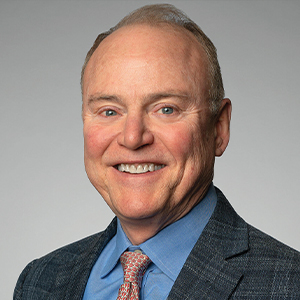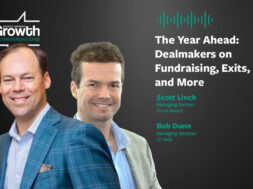Forvis Mazars’ CFO Roundtable Explores the State of the Market
Falling valuations and continuation funds are trends to watch, participants said

A recent event hosted by Forvis Mazars, a national accounting and consulting firm, brought together finance leaders for a discussion about the state of the market, deal activity, continuation funds and more.
Among the participants in the Forvis Mazars CFO Roundtable, hosted in Atlanta on May 16, were Forvis Mazars’ Billy Parker, national leader of the firm’s Technology & Services practice, and Scott Linch, leader of the Private Equity practice. Bob Dunn, managing director of GF Data, an ACG company, presented quarterly data about middle-market deal activity, pricing, terms and more.
This section of the report is sponsored by Forvis Mazars and originally appeared in the Summer 2024 issue of Middle Market Executive.
Twenty attendees participated in the roundtable, which was held at the Cherokee Town and Country Club.
Here are some of the insights shared by Parker, Linch and Dunn, lightly edited and condensed for print.
Contextualizing the Market
Bob Dunn: This has been a disappointing year for deals so far. At GF Data, we tracked 72 deals in the first quarter of 2024, compared to 291 deals for all of 2023; 333 deals for 2022; and 501 deals for 2021.
But the context is important: 2021 was an outlier. It was the product of a realization that business wasn’t going to grind to a halt with COVID, and that you could do virtual site visits and handle things on Zoom. In general, 330-350 deals annually on average is more typical.
So, 2023 was off by more than 40% compared to 2021, and we’re about 17% off from where the market would normally be. Higher interest rates obviously factor into that. I also think it’s easy to forget, but in 2023, we had the second largest banking failure in U.S. history. That seems like a long time ago now, but obviously it’s reverberating in terms of what we’re paying for debt.
The other point to note is a marked step-down in average valuations from 2022 through 2023: about three-tenths of a turn of trailing 12-month EBITDA. Then in the first quarter of 2024, there was an even larger drop, of a little more than half a turn of EBITDA.
I view this as a positive for the market. I spoke to one of our family office contributors at the end of the fourth quarter and said we’ve really had a deal flow problem in the last year. And he said, “No, we’ve had a deal valuation problem, because we can’t agree on the value. Sellers still think it’s 2021, but it’s not 2021 anymore.”
COVID was an atypical period, so it is hard to make comparisons. Is the earnings growth a lot of industries experienced during COVID sustainable? I would venture that it isn’t, and we’re seeing a lot of dented companies coming through with declining revenue. But I think that’s a positive, and there are signs in the market of acceptance that prices
need to come down.
We need bridging mechanisms, which have been another big feature of the last year or so. Earnouts, seller rollover equity—anything that helps to align interests.
I don’t think any seller likes rollover equity or earnouts, but buyers want to have alignment of interest. And if the seller believes growth is sustainable, then the buyer is asking them to put their money where their mouth is. About 60% of transactions in the last five quarters included an earnout, which is atypical, but it’s very much part of the landscape now.
Small Deals Loom Large
Dunn: Most of 2023 was a flight to quality, and a flight up-market in terms of enterprise value. That’s starting to slip away a little bit. Now there’s more pressure on the larger companies in terms of debt financing, but it’s improving for the smaller ones—the smaller companies encountered the challenges earlier. The larger ones are now starting to see challenges on pricing. I think this is all part of the market digesting the fact that it’s a different time than it was two years ago.
Scott Linch: What we’re seeing in deal flow right now is that smaller deals are where it’s at. The big mega deals aren’t happening as much. Those aren’t really flourishing right now, especially with interest rates going up. We are seeing a lot of middle-market deals. Interestingly, add-ons to companies right now account for 75% of all deal flow.
Dunn: There’s been some interesting distortion on the price paid for platforms versus add-ons. Traditionally, you see add-ons going for much less than platforms, but now we’re seeing add-ons are going for more, at least in a couple of the size tiers.
Moving down-market is a trend that we saw in 2023 and in the latter part of 2022. Larger firms are using existing credit facilities on their platforms to buy other companies, because they don’t like the rates they’re getting, or they can’t get financing. This means some of the add-ons are going for higher multiples than platforms, because these bigger players are involved. That is some of the distortion you still see: 7.3x (total enterprise value (TEV)/ EBITDA) average for platforms, versus 6.7x for add ons. That’s less of a difference than we’d expect to see between the two.
Traditionally, you see add-ons going for much less than platforms, but now we’re seeing at least a couple of the size tiers in which add-ons are going for more.
Bob Dunn
GF Data
Public v. Private
Billy Parker: The stock market is at an all-time high, including Nasdaq. I know it ebbs and flows, but are you seeing a correlation between the stock market and private company values?
Linch: Ultimately, the public markets have multiples of earnings, too, so those will drive these multiples to some extent. But private companies are often discounted; the liquidity is different than in the stock market. You have some private company discounts, among other factors.
Dunn: While there was an impact on lending in the middle market, you didn’t have the challenges of syndication last year, which made it worse for larger public companies compared to smaller private companies.
Linch: Most people will have been relying on private credit, versus senior debt, to get deals done, and now it’s starting to shift a little bit. The senior debt usage is picking up.
Continuation Funds
Dunn: We’re in an era where continuation funds are becoming a real factor. A continuation fund allows a private equity sponsor to essentially sell the interest that the LP has and return the money but retain the ownership of the company. It’s always been a fringe thing, but we’re seeing a lot more activity there.
Linch: Continuation funds are an option for private equity firms when they want to sell a company but it’s not a good time to sell. The LPs want liquidity. The private equity firm raises a fund that buys the company so that the GP can keep their interest in the company while also giving LPs their money back.
The biggest deal recently was the SRS Distribution deal, which was sold to Home Depot in a huge exit for Leonard Green. But Leonard Green was able to hold that asset for longer because they raised a continuation fund.
Parker: A cool thing about continuation funds for investors is you have a shorter horizon to liquidity (typically three to four years) instead of a typical five- to seven-year horizon with most PE investments. I think we’ll see more use of continuation funds because of the market in general and more investors being attracted to PE with these shorter liquidity horizons. They’re pretty cool products, which makes investing in the industry overall even more compelling.
Linch: And most of the LPs don’t roll over. They’re given the first right to stay in the continuation fund and stay in the company, but most don’t because they really need the liquidity.
Parker: It works out great for the investor. People can say, “OK, I’ll get in if I can get out in two or three years,” as opposed to having a five-year minimum and a 5% gate.
Linch: The bigger deals aren’t getting done right now because interest rates are up and hold periods are a lot longer.
Normally, with private equity you sell your business in five years. Now you may have to hold it seven or eight years, and to get to that seven or eight, you have to give liquidity back by five.
It’s not that the businesses aren’t performing, it’s that the timing has not been optimal to sell them.
Scott Linch leads the Private Equity industry practice for Forvis Mazars, a Top 10 national professional services firm that offers comprehensive assurance, tax, advisory and wealth management services. Linch has dedicated much of his career to conducting buy-side and sell-side due diligence services for clients in a variety of industries with transaction sizes ranging from $2 million to more than $9 billion dollars. Learn more about Forvis Mazars at Forvis Mazars.us.

Billy Parker is the national industry leader of FORVIS’ Technology & Services practice. He has more than 30 years of experience, with a focus on the tech sector. Parker serves as lead audit partner, client executive partner, and/or industry partner for public and private technology companies ranging from the Fortune 1000 to startups.

Bob Dunn is managing director of GF Data, an ACG company that provides data on private equity M&A transactions between $10 million and $500 million in enterprise value, based on information contributed by 320 participating private equity firms. Learn about how a GF Data subscription can help your firm compete more effectively in dealmaking at gfdata.com.

Middle Market Growth is produced by the Association for Corporate Growth. To learn more about the organization and how to become a member, visit www.acg.org.


